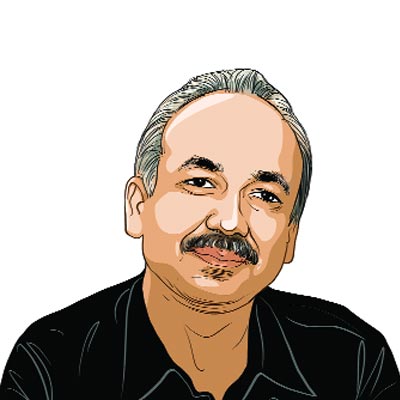Opinion The crowds of October
How temple-visiting in the festive season holds the key to Nepal power politics
Nepal has a rich mix of traditions,and a history of their tolerant practice. Except for the banning of conversions,there is little evidence of any individual or group being barred from practicing their faiths and traditions,despite the country being a Hindu nation until about five years ago. Nor did that stop any one from being an atheist or agnostic.
However,during their brief stints in power first as a major partner in the government and then as leader of the coalition the Unified Communist Party of Nepal-Maoists (UCPN-M) obstructed daily worship in the Pashupatinath temple twice,briefly,between January 2007 and January 2009,shortly after the state was declared secular following the political changes of April 2006. The obstruction came as a result of protests from believers and temple authorities when the government tried to replace Indian priests without following the age-old traditions that governed new appointments.
However,as political parties faced charges of having succumbed to the influence of the western world and of the church in declaring Nepal a secular state,even the communists and secularists tried to respond to those charges in the manner they thought appropriate. G.P. Koirala,who took over as head of government and acting head of state post-2006,suddenly ceased to be the atheist that he had claimed to be all those years,and began visiting temples in his official capacity.
He had to send out the message that he had not bartered the nations Hindu status for money,nor was ending that status some sort of surrender to the Western world. Dr Rambaran Yadav,the Republic of Nepals first president,observed all the religious and traditional practices that,earlier,the kings had performed. Thus,Yadavs presidential durbar was crowded with the general public on October 17,the second Vijaya Dashami since he took over. This used to be the one occasion in the year on which the royal palace would be open to all,and on which the king and queen would offer the public prasad.
But the crowd that went to the presidents house on the occasion was smaller than that which queued up before Nirmal Niwas barely 200 yards away,the house of the former king. He had recently said he would prefer to be called just Gyanendra Shah,and not the ex-maharaja or his majesty,as some people would still address him. But that crowd held him in different esteem. The size of the crowd also indicated clear disapproval of the express order that caretaker Prime Minister Madhav Nepal had issued last month putting the former king under house arrest minutes before he was to leave for darshan of Kumari,revered as a living goddess by many in Nepal. Madhav Nepal,in his first-ever move to deny a Nepali commoner the right to free movement and practice of religion,was trying to appease President Yadav,whose own visits were being overshadowed by the crowds response to Gyanendra.
Thus,two days prior to Vijaya Dashami,Gyanendra informed the government that he would want to visit various shrines of Shakti on the day of Maha-ashtami at any time that would be convenient for the government and the president. Dr Yadav chose to visit the temples in the forenoon,but Gyanendras visits two hours later drew much bigger crowds.
Politically,from the speaker of the constituent assembly to the president,everyone has said one thing: that the key elements of the 2006 movement republicanism,secularism and federalism will only be institutionalised once the new constitution comes in place,something that seems nowhere close to realisation.
The assembly has not only failed to elect a government in about a dozen attempts spanned over more than three-and-a-half months,but also failed to deliver a proper budget even four months after the new financial year began,combining political crisis with constitutional deadlock. Clearly,the villains are the current political parties,including the Maoists. And the monarchy,in this new perception,is both a victim and perhaps,still an institution that Nepal needs.
This could get much more intense in the near future,with the blame-game and infighting among the three major political parties already headed towards the derailment of Nepals peace and constitution-making process. Each of them blames the others but the people blame them all collectively.
yubaraj.ghimire@expressindia.com





